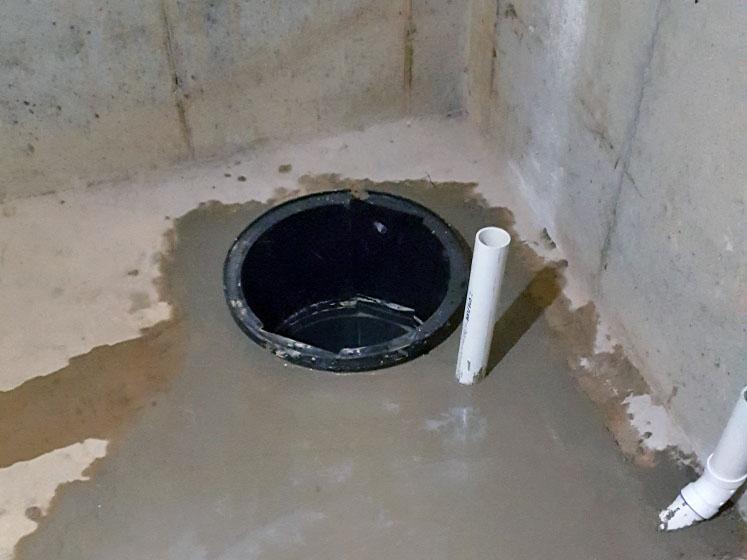My Guide to Effectively Taking Care of a Sump Pump
My Guide to Effectively Taking Care of a Sump Pump
Blog Article
We have noticed this post relating to Keep Your Sump Pump Clean, It'll Keep You Dry down the page on the internet and decided it made perfect sense to write about it with you over here.

Sump pumps are crucial parts in lots of homes, especially in areas prone to flooding or extreme wetness. They help prevent water damages by efficiently getting rid of excess water from cellars or crawl spaces. However, like any other home appliance, sump pumps require routine maintenance to guarantee they function properly when needed one of the most. Cleansing your sump pump is a vital part of its upkeep, and comprehending exactly how to do it properly can save you from costly fixings and possible catastrophes.
Intro
Preserving a clean sump pump is crucial for its correct functioning and durability. Neglecting this vital task can bring about clogs, malfunctions, and ultimately, water damage to your residential or commercial property. As a result, learning exactly how to clean up a sump pump is essential for property owners who depend on these tools to maintain their cellars completely dry and secured.
Recognizing the Sump Pump
Before diving right into the cleansing procedure, it's essential to have a standard understanding of just how a sump pump functions. Normally installed in a pit or container below the basement floor, a sump pump contains several crucial elements, consisting of a pump, a float button, and a discharge pipeline. When water builds up in the pit, the float switch triggers the pump, which after that pumps the water out through the discharge pipe, far from the building's structure.
Signs of a Dirty Sump Pump
Recognizing when your sump pump requires cleaning is important for protecting against possible breakdowns. Some common indications that suggest a filthy sump pump consist of weird noises throughout procedure, reduced water circulation, and noticeable particles in the pit. If you observe any of these signs, it's essential to cleanse your sump pump promptly to prevent any more problems.
Getting ready for Cleaning
Before you start cleaning your sump pump, it's important to take some safety preventative measures. Start by turning off the power to the pump to prevent any kind of electrical mishaps. Furthermore, wear suitable safety gear, such as gloves and goggles, to secure yourself from dirt, particles, and potential pathogens.
Step-by-step Guide to Cleaning a Sump Pump
Turning off the Power
Begin by detaching the power supply to the sump pump to stop any type of accidents while cleansing.
Getting Rid Of Debris and Dust
Utilize a container or an inside story to eliminate any type of visible particles, dust, or debris from the sump pit. Dispose of the particles properly to prevent it from obstructing the pump or the discharge pipe.
Cleaning up the Pump and Float Change
As soon as the pit is free from particles, meticulously remove the pump from the pit. Examine the pump and the float switch for any signs of damages or wear. Use a soft brush or fabric to cleanse the surface areas and eliminate any type of collected gunk.
Purging the System
After cleansing the pump and float switch, flush the sump pit with tidy water to get rid of any remaining dust or sediment. This will help make certain that the pump runs smoothly and efficiently.
Looking For Appropriate Functioning
Before re-installing the pump, execute a quick examination to make certain that the float switch triggers the pump correctly. Put some water right into the sump pit and observe the pump's procedure. If everything is working appropriately, you can reconstruct the pump and reconnect the power supply.
Upkeep Tips to Keep Your Sump Pump Clean
Along with routine cleansing, there are several maintenance suggestions you can follow to maintain your sump pump in optimal condition:
Conclusion
Cleaning your sump pump is an important element of its upkeep and ensures that it runs efficiently when you require it one of the most. By adhering to the actions laid out in this guide and including routine maintenance into your regimen, you can prolong the lifespan of your sump pump and protect your home from water damage.
6 STEPS ON HOW TO CLEAN A SUMP PUMP PROPERLY
UNDERSTANDING SUMP PUMPS
Your sump pump plays a crucial role in protecting your home by managing and removing excess water. It primarily functions as a “shield”, guarding your basement against the damaging effects of water accumulation. The pump is housed in a sump pit in the lowest part of your basement, and its job is to pump out any water that collects there.
During heavy rainfalls or when snow melts rapidly, water can infiltrate your basement, posing potential risks like flooding, structural damage, and harmful mold growth. Here, the sump pump springs into action, pumping out the intruding water and directing it away from your home.
SAFETY FIRST
Before cleaning, remember to prioritize safety. Disconnect the sump pump from the power source to prevent any accidental electric shocks. Also, wear sturdy gloves to protect your hands from any sharp or dirty components within the pump.
REMOVE THE SUMP PUMP
After ensuring your safety, the next step is to remove the sump pump from its pit. Doing this might require careful maneuvering as you don’t want to damage any pump components. Once removed, clean the sump pit to remove any accumulated debris or sludge.
INSPECT THE PUMP
Inspect the pump for any visible signs of wear or damage. Check the power cord, float switch, and impeller housing. If any components look worn out or damaged, consider replacing them to ensure optimal performance.
CLEAN THE PUMP
Thoroughly clean the pump with warm, soapy water. Make sure to rid it of any dirt, gravel, or other debris that might impede its performance. You can use a toothbrush to clean the small, hard-to-reach parts of the pump.
REINSTALL THE SUMP PUMP
Reinstall the pump into the sump pit Make sure it’s positioned correctly to remove the water effectively Once it’s back in place, reconnect it to the power source TEST THE PUMP
Finally, pour some water into the pit to ensure the pump works correctly. It should start automatically and begin pumping out the water; if it doesn’t, check the power source and the positioning of the pump.
Remember, while cleaning your sump pump is an essential part of home maintenance, hiring a professional plumber for a thorough inspection and cleaning at least once a year is also important. This will ensure that your pump is in optimal condition, ready to protect your home from potential water damage.
BEST PRACTICES FOR CLEANING SUMP PUMP DISCHARGE PIPES
Regular Inspection: Regularly inspect your discharge pipes, especially during heavy rainfall or snowmelt periods. Look for any signs of blockage or damage. Early detection of problems can prevent serious issues down the line. Periodic Cleaning: Over time, sediment and debris can accumulate in the discharge pipes, impeding the flow of water. Regular cleaning helps keep the pipes clear and functioning efficiently. You can use a high-pressure water jet to effectively clean the pipes. Insulation During Winter: In colder climates, discharge pipes can freeze, blocking the outflow of water. Protect your discharge pipes from freezing temperatures by insulating them with foam pipe insulation. This will ensure the sump pump can continue to discharge water even in freezing conditions. Proper Positioning: The discharge pipe should be positioned to direct water away from your home’s foundation. Improper positioning can lead to water seeping back into the basement. Ensure the pipe is long enough and angled correctly. Installation of a Check Valve: A check valve prevents water from flowing back into your sump pit after the pump has pushed it out. Installing a check valve helps maintain the efficiency of your sump pump and reduces the risk of flooding. Minimize Pipe Turns: Every curve or turn in the discharge pipe can decrease the efficiency of water flow. By minimizing turns and bends in your discharge pipe, you can increase the efficiency of your sump pump. https://www.fullspeedplumbing.com/how-to-clean-a-sump-pump-properly9999/

I was made aware of that write-up about Cleaning & Maintenance Tips for Your Home's Sump Pump from an associate on a different web address. Are you aware of anybody else who is fascinated by ? Take a moment to promote it. Kudos for being here. Kindly stop by our blog back soon.
Get Started Report this page